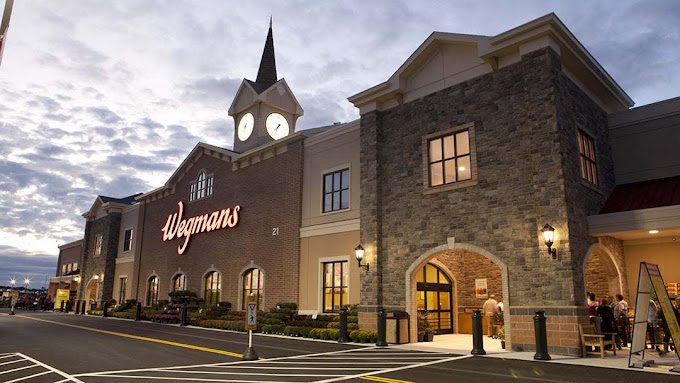Featured Project
- Project: Wegmans, Boulevard at Box Hill
- Services: stormwater management, grading, retaining wall construction, utility instalation, and paving.
- Location: Abingdon, Maryland
- Timing: 2009-2011
- Project Manager: Rodger Burkins
With the increase of families living in the area due to base realignment (BRAC), Harford County became a prime location for a new 144,000-square-foot Wegmans grocery store. In addition to the anchor tenant, a variety of retail, restaurant, and office spaces were also constructed near Route 24 and Interstate 95.
In addition to the routine site preparation measures of grading, utility installation, and paving, this project required the installation of a sizable retaining wall.
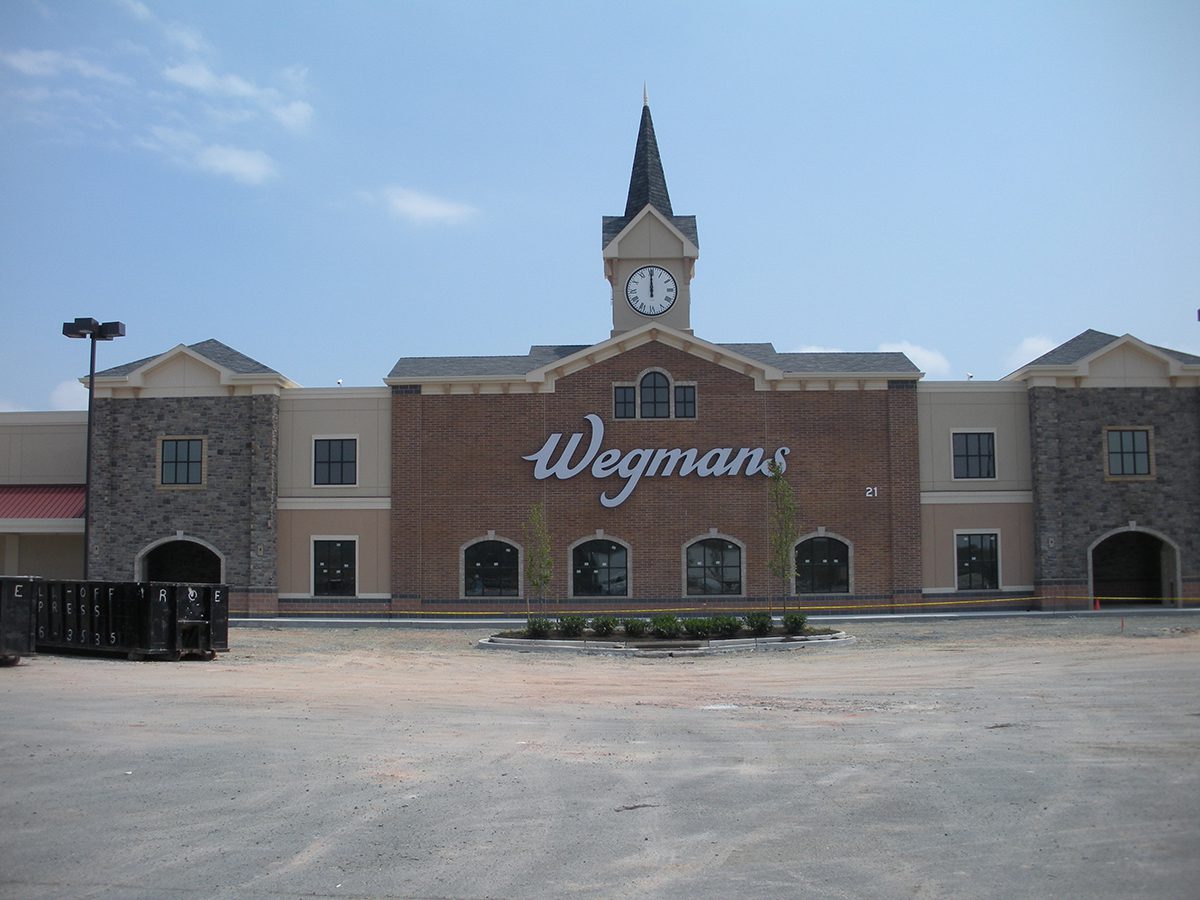
The developer on the project, Ward Properties, hired Comer Construction for the $7 million construction project. Both Ward Properties and Comer Construction have a long history of excellence and take pride in serving the local area. It was an exciting achievement for both companies when the project broke ground. The new Wegmans filled a need for Harford County.
Preparing Land for Construction in Harford County
Before a property can be developed, a variety of measures are needed to prepare the land for construction. All of these services were used in preparing the site in Abingdon, Maryland.
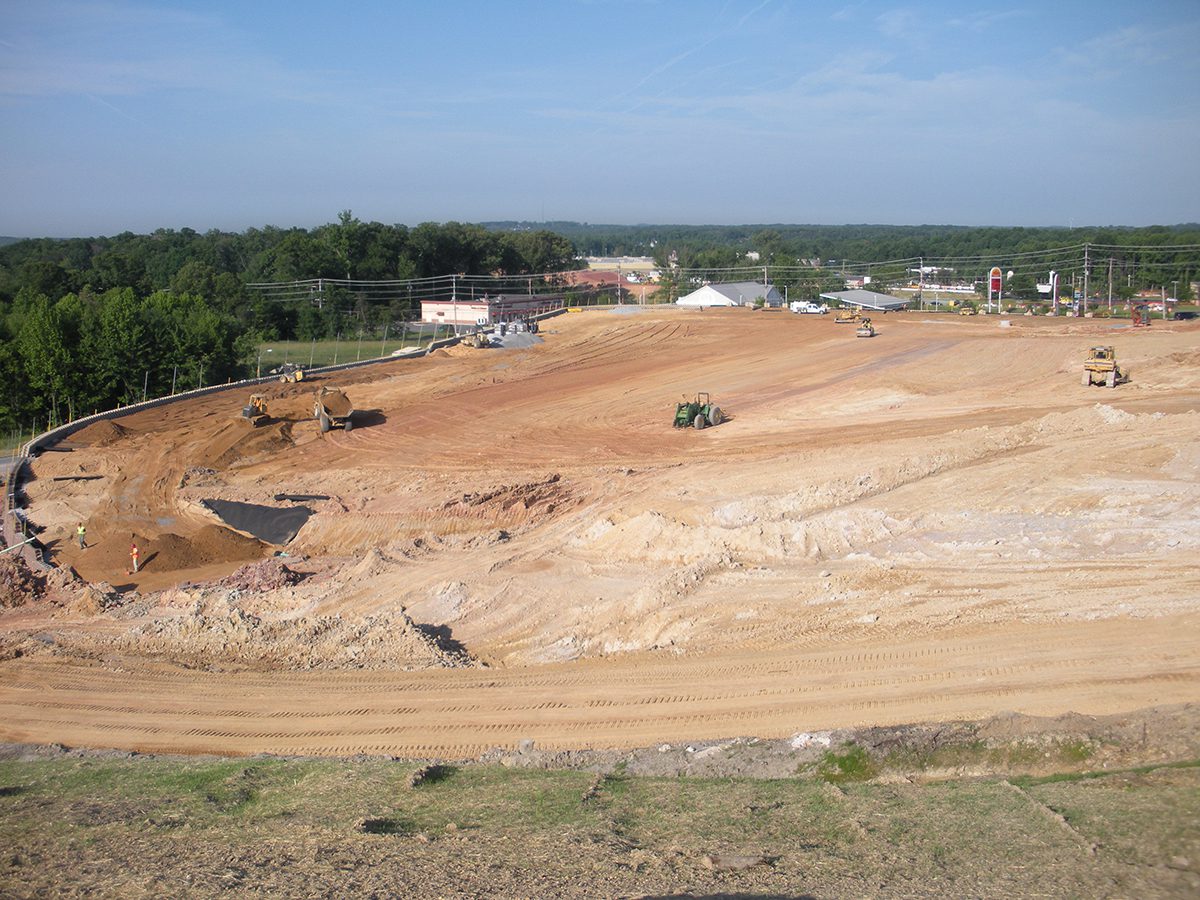
Land Clearing
Land clearing for construction refers to the process of removing trees, vegetation, rocks, and other natural obstacles from a piece of land in order to prepare it for building or development. This typically involves the use of heavy machinery such as bulldozers, excavators, or backhoes to remove trees, stumps, and other vegetation, as well as the leveling of the ground to create a smooth, flat surface for construction. The goal of land clearing for construction is to create a suitable site for the construction of new buildings, roads, or other infrastructure, while minimizing the impact on the surrounding environment.
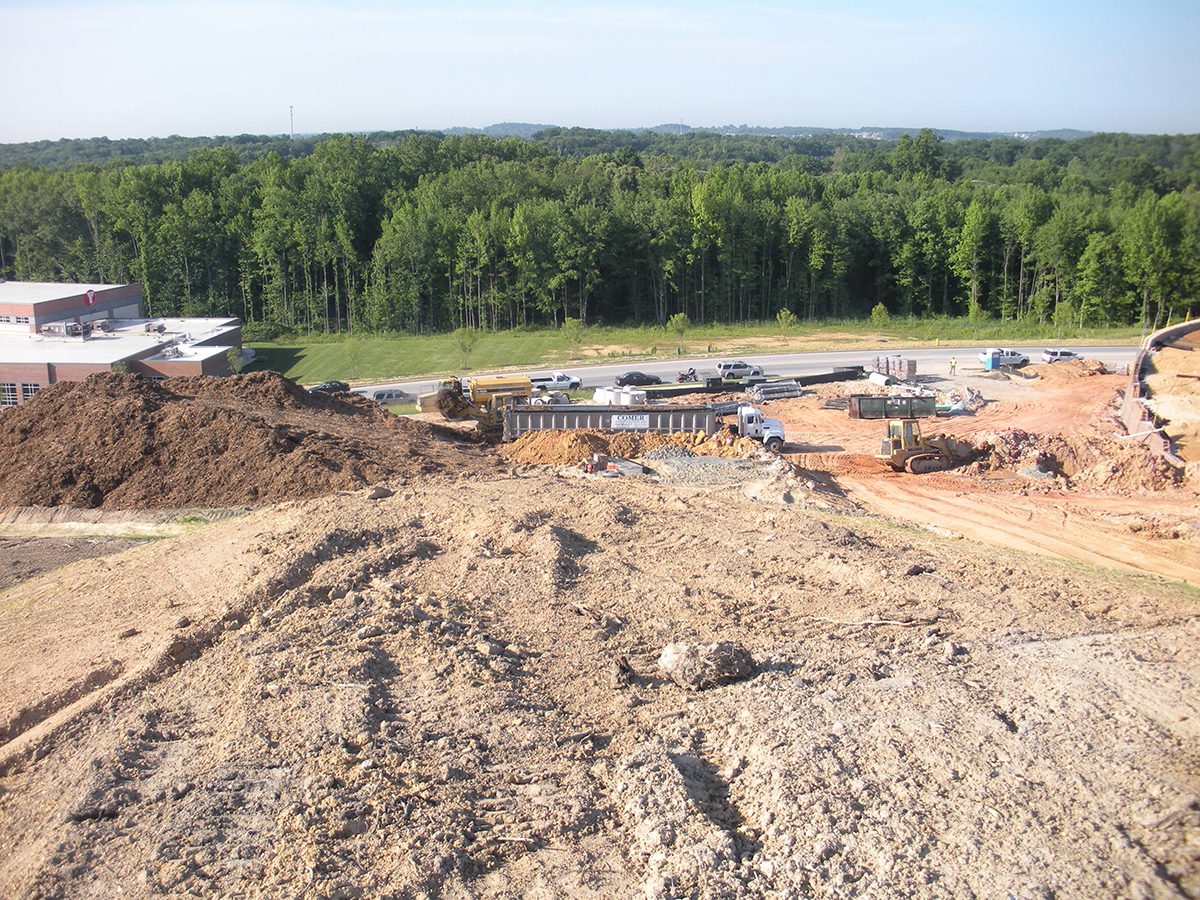
Sediment and Erosion Control
Sediment and erosion control refers to a set of practices and measures used to prevent soil erosion and the movement of sediment from construction sites, industrial facilities, and other areas of disturbance. Sediment is soil, sand, or other particulate material that is carried away by water, wind, or other forces of nature, while erosion is the process by which soil is removed from its original location.
To control sediment and erosion, various techniques can be used, including the installation of silt fences, sediment ponds, or erosion control blankets, as well as the use of vegetation to stabilize soil and prevent erosion. These practices are intended to reduce the amount of sediment that enters nearby waterways, which can harm aquatic habitats and water quality. Sediment and erosion control measures are often required by law in construction and industrial projects to minimize the environmental impact of the project and to protect nearby communities and ecosystems.
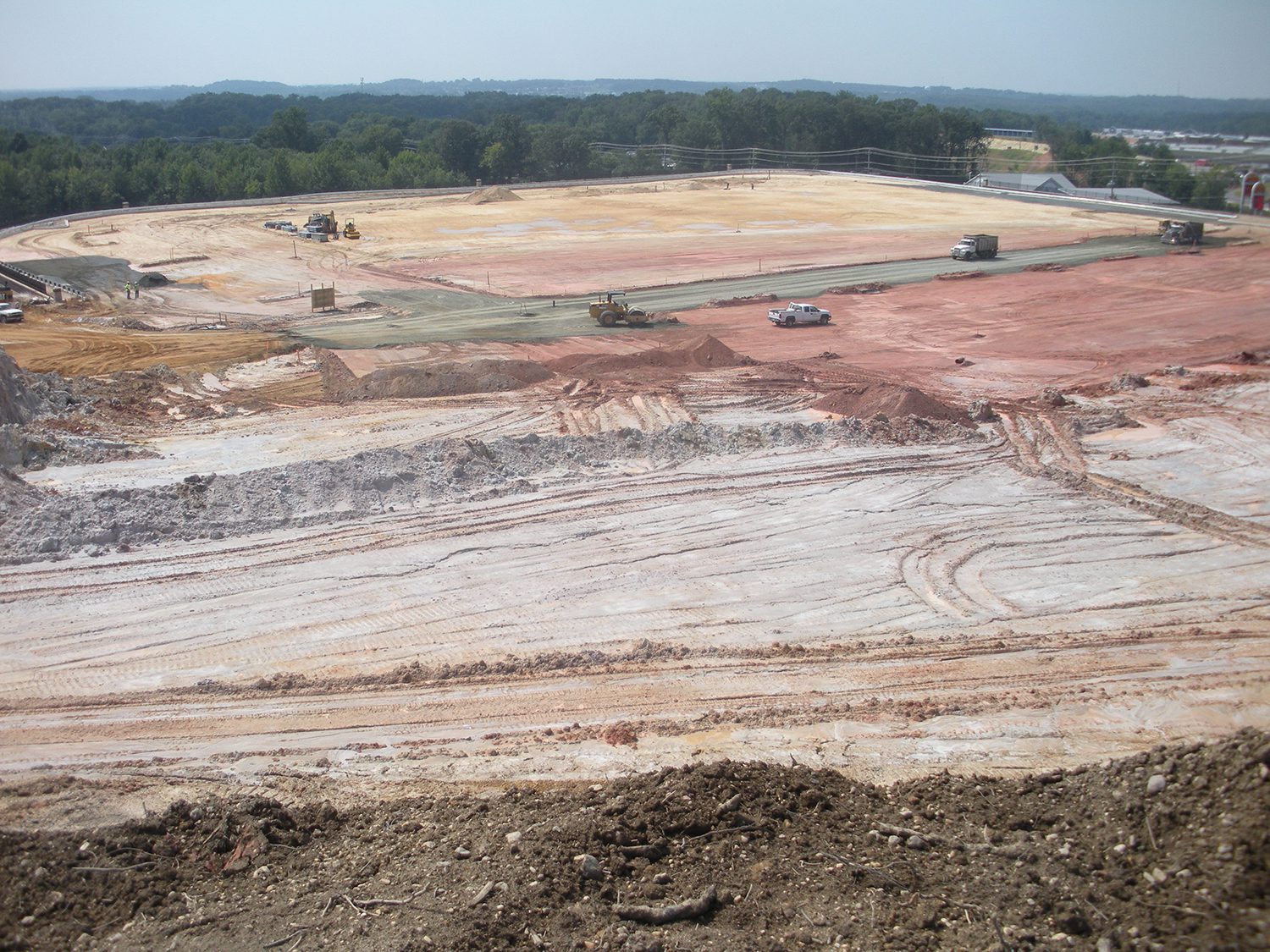
Stormwater Management
Stormwater management for construction refers to the planning, design, and implementation of systems and practices that manage the runoff of rainwater and other precipitation from construction sites. During construction, activities such as grading, excavating, and paving can significantly alter the natural landscape, which in turn can impact the way water flows across the site.
If not managed properly, stormwater runoff can cause erosion, flooding, and the transport of sediment and pollutants into nearby streams, rivers, and other bodies of water. To manage stormwater during construction, various best management practices (BMPs) can be used, including the installation of sediment and erosion control measures, such as silt fences and sediment ponds, as well as the use of stormwater management practices, such as rain gardens, permeable pavement, and retention ponds. These practices can help to slow down the flow of stormwater, filter out pollutants, and recharge groundwater supplies. Stormwater management for construction is often required by local and state regulations to protect water quality and minimize the impact of construction on the environment.
To control sediment and erosion, various techniques can be used, including the installation of silt fences, sediment ponds, or erosion control blankets, as well as the use of vegetation to stabilize soil and prevent erosion. These practices are intended to reduce the amount of sediment that enters nearby waterways, which can harm aquatic habitats and water quality. Sediment and erosion control measures are often required by law in construction and industrial projects to minimize the environmental impact of the project and to protect nearby communities and ecosystems.
Installing Utilities For Abingdon Commercial Development
In addition to preparing the land for construction, Comer Construction installed utilities to service the Boulevard at Box Hill property. The mixed-use project includes over 350,000 square feet of buildings and is less than one mile form I-95 in Harford County.
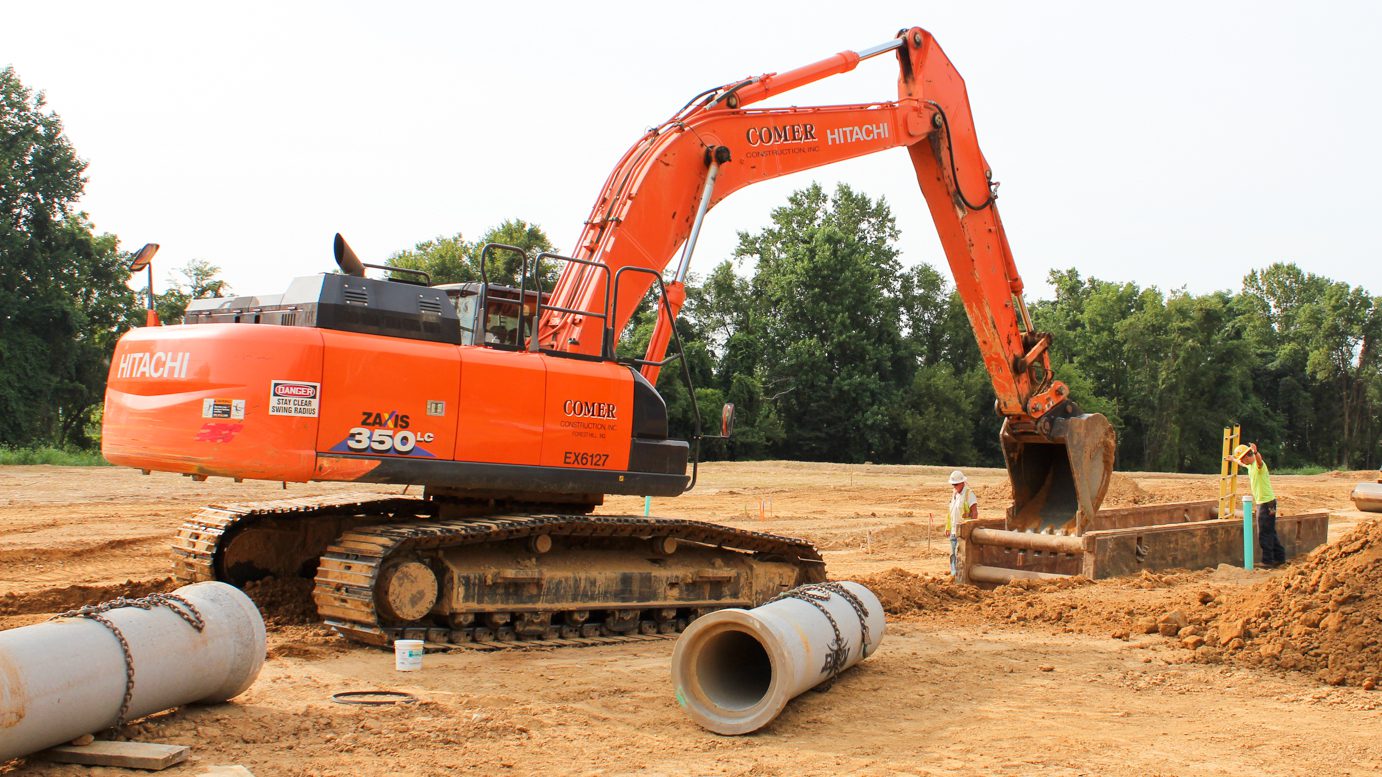
Sewer Main and Connection
A sewer and main connection is a connection between a building’s sewer line and the main sewer line that runs through a city or municipality. The main sewer line is typically a large pipe that collects and carries wastewater from various buildings and properties to a wastewater treatment plant.
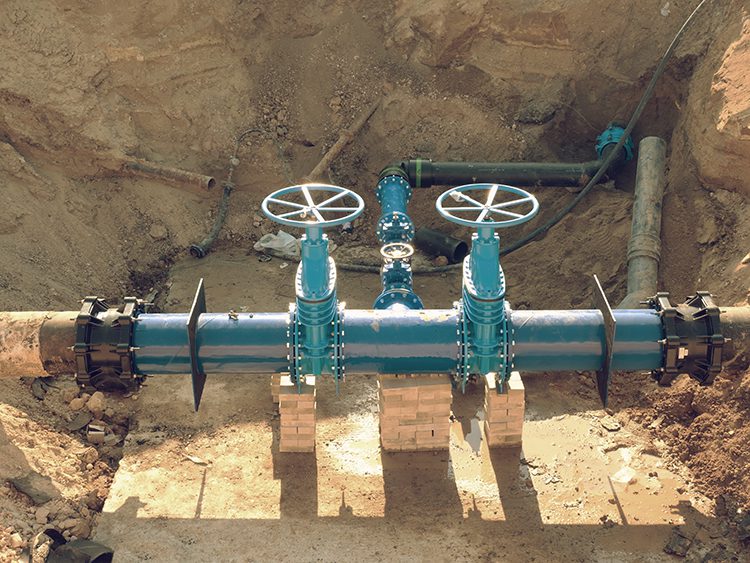
Water Main and Connection
A water main connection is a connection between a building’s water supply and the main water supply line that runs through a city or municipality. The main water supply line is typically a large pipe that brings fresh water to various buildings and properties, while a building’s water supply line is a smaller pipe that carries fresh water from the main supply line into the building.
Proper utility connections are important for public health and safety. Sewer connections prevent the contamination of local waterways and groundwater supplies by ensuring that wastewater is treated and properly disposed of at a wastewater treatment plant. Water connections allow for fresh water to be delivered to the building’s plumbing fixtures, such as sinks, toilets, and showers, and can help prevent water contamination by ensuring that fresh water is sourced from a safe and regulated water supply.
Building The Box Hill Retaining Wall in Abingdon
Besides driving on roads and parking lots, the public usually doesn’t see most of Comer Construction’s work once a project is finished. The same can’t be said for the massive retaining wall built for the Boulevard in Box Hill complex. GTA designed the modular block retaining wall.
The retaining wall at this project spans 1,320 feet from Route 924 all the way to Box Hill Corporate Center Drive where it wraps the corner and keeps going. Its 45 feet tall at its highest point and it spans an area over 42,000 square feet.
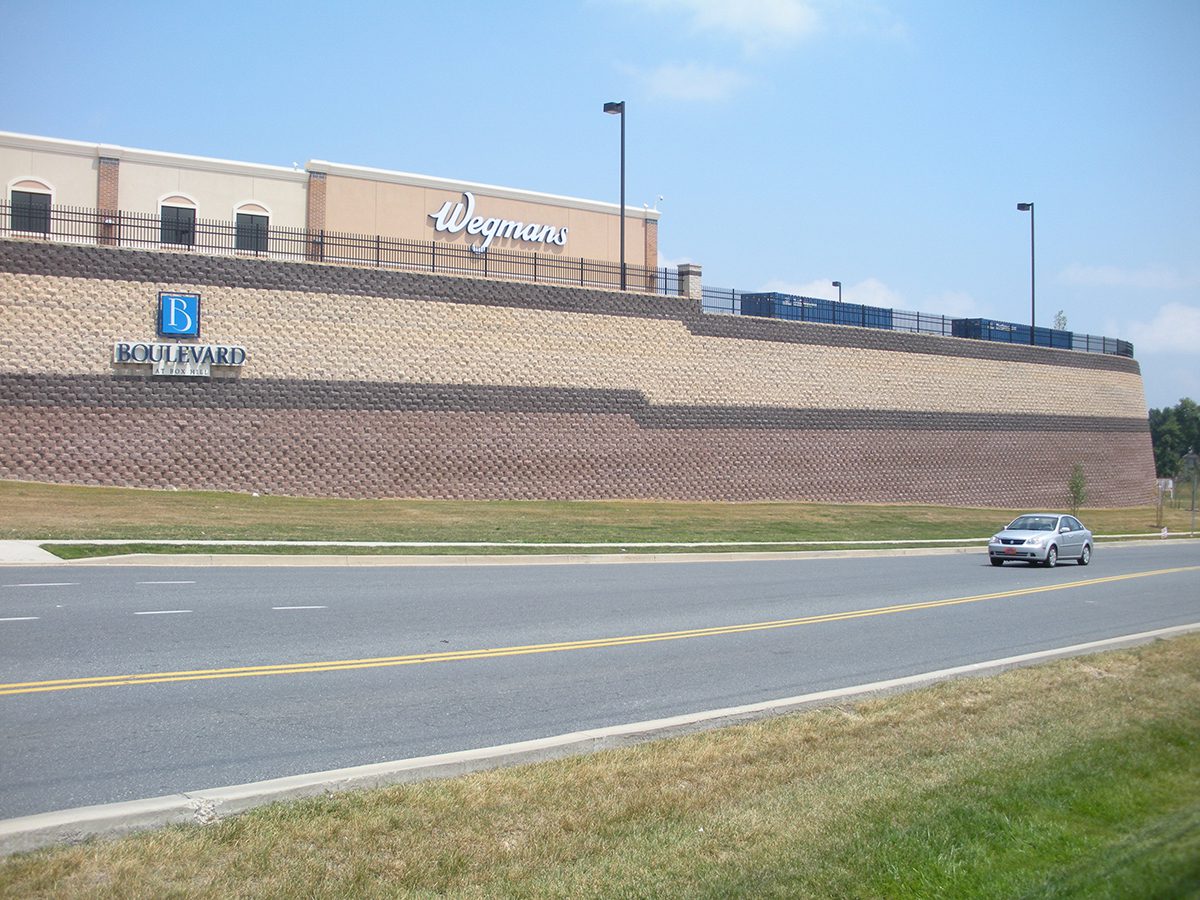
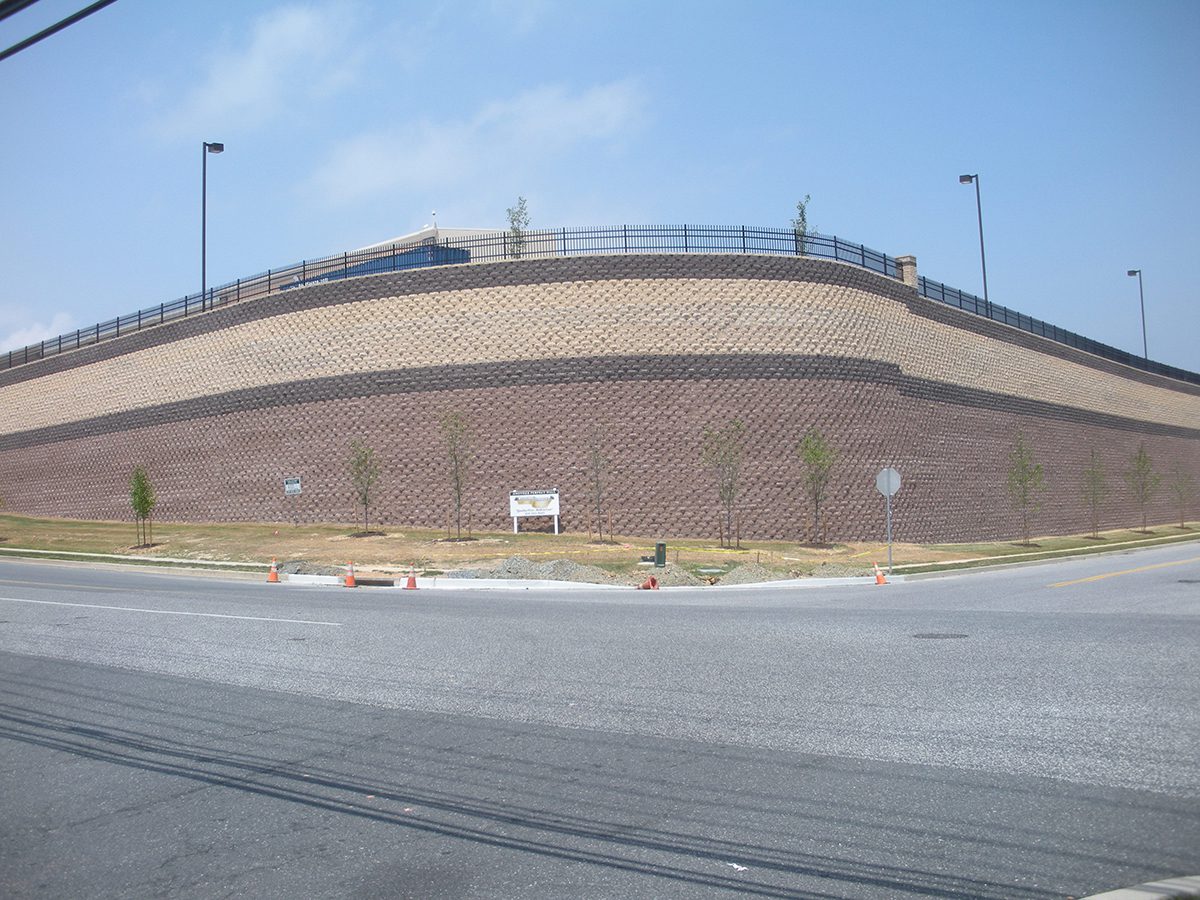
Feet Long
Feet Tall
Square Feet
Paving, Curb and Gutters in Harford County
Comer Construction provides full roadwork and paving services in Harford County and throughout the greater Baltimore area. Paving services are an essential part of any construction project that involves the installation of roads, parking lots, sidewalks, and other outdoor surfaces.
Comer Constructions uses a variety of materials, including asphalt and concrete, to create durable and long-lasting surfaces that can withstand heavy use and changing weather conditions. Working closely with the construction teams, we’re able to ensure that the paved surfaces meet the project’s specifications and is completed on schedule.
Put our experienced site construction team to work on your next construction project. Contact Comer Construction today.
